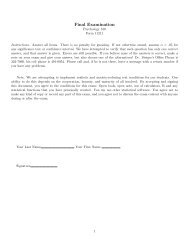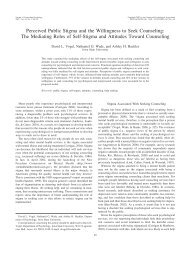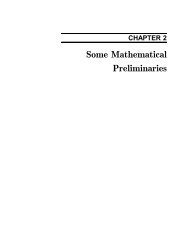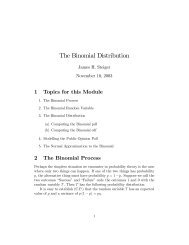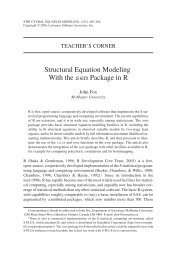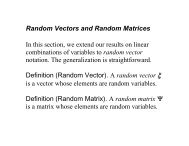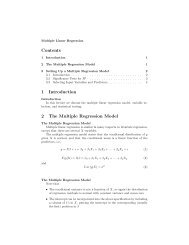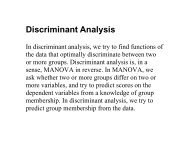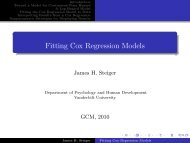Propensity Score Matching - Statpower
Propensity Score Matching - Statpower
Propensity Score Matching - Statpower
Create successful ePaper yourself
Turn your PDF publications into a flip-book with our unique Google optimized e-Paper software.
IntroductionModeling the CovariatesSubclassification<strong>Matching</strong>Balancing <strong>Score</strong>sThe <strong>Propensity</strong> <strong>Score</strong><strong>Matching</strong> MethodsUsing <strong>Propensity</strong> <strong>Score</strong>s – A General StrategyAn ExampleMathematical PropertiesDefinition of a <strong>Propensity</strong> <strong>Score</strong>Key AssumptionMathematical PropertiesKey ImplicationsKey QuestionsRosenbaum and Rubin (1983, p. 43–44) proved the followingtheorems:1 The propensity score is a balancing score2 Any score that is “finer” than the propensity score is abalancing score; moreover, X is the finest balancing scoreand the propensity score is the coarsest3 If treatment assignment is strongly ignorable given X , thenit is strongly ignorable given any balancing score b(X )4 At any given value of a balancing score, the differencebetween the treatment and control means is an unbiasedestimate of the average treatment effect at that value of thebalancing score if treatment assignment is stronglyignorable. Consequently, with strongly ignorable treatmentassignment, pair matching on a balancing score,subclassification on a balancing score and covarianceadjustment on a balancing score can all produce unbiasedestimates of treatment effects,5 Using sample estimates of balancing scores can producesample balance on X .Multilevel<strong>Propensity</strong> <strong>Score</strong> <strong>Matching</strong>





